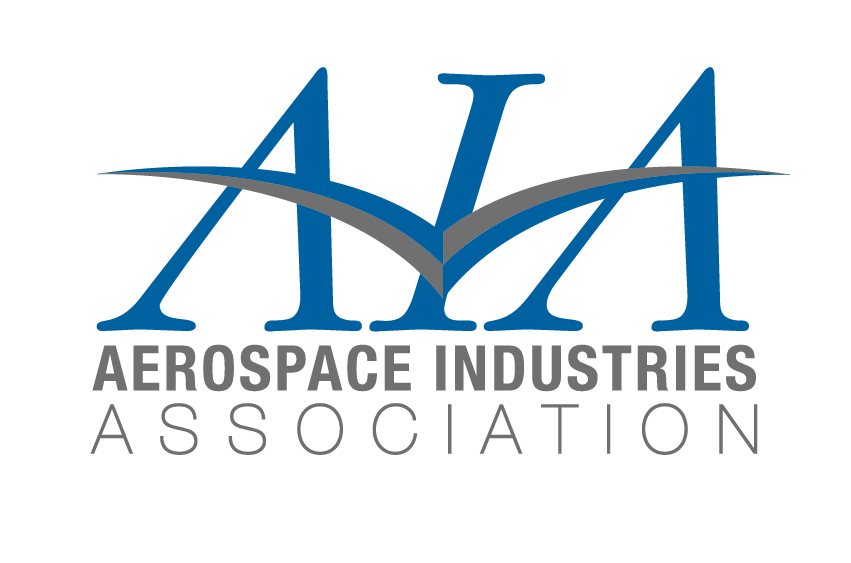
About the Author
David F. Melcher
President and CEO, AIA, Aerospace Industries Association
As the Aerospace Industries Association’s (AIA) new President and CEO, I welcome the opportunity to provide to readers of American British Trade & Investment my thoughts about the US aerospace and defence community’s role in promoting vibrant aerospace and defence industries in both our countries.
I have the honour of being the ninth full time leader of AIA, which has been a key element in our industry since 1919, just after the dawn of fl ight. We work for a current membership of 314 companies, who operate in all 50 states and abroad. Our companies invent and manufacture the world’s most advanced military platforms, missiles, cyber security systems, IT infrastructure, Unmanned Aircraft Systems, civil aircraft, helicopters, satellites, spacecraft, launch vehicles, ground vehicles and ships. They also provide sophisticated services to government and commercial customers.
AIA’s job is to advocate for policies in the US and in the international arena that give our member companies the best possible chance to succeed at home and in the global marketplace, where we see most of the growth opportunities for our industry occurring. Given that our domestic companies must draw upon the talent and expertise of companies outside our borders, we highly value the collaboration our industry and nation have enjoyed with our counterparts in the United Kingdom.
I recently came across an article that UK Air Chief Marshal Sir Stuart Peach wrote in the US publication Defence One. Sir Stuart made the following useful observations about our alliance:
- The US-British military-scientific communities have enjoyed a longstanding productive relationship, beginning in 1940 when Sir Henry Tizard led a team of UK military and civilian scientists on a secret mission to the US that helped bring US expertise and resources to bear in cracking some of the most difficult technology problems the British military faced.
- Today, the US and UK remain each other’s largest science and technology partners, both in defence and wider academia.
- Both countries have recognised that we can no longer afford to develop military technology exclusively ‘in- house.’ We must also exploit the seemingly exponential gains being made in the private sector. We may well be returning to an age where, like the steam-powered industrial revolution, industry innovates and defence exploits.
- In this age of austerity, and with increasing reliance on each other to conduct military operations, one advantage is more important than ever: our nations’ partnership. By forging new agreements and building on the legacy of our pioneering predecessors, together we can help to secure the next strategic advantage.
One such agreement is the 2014 US-UK defence pact aimed at increasing the number of collaborative science and technology programmes between our two nations. This first formal US-UK defence science agreement is targeting such technologies as satellite communications, navigation and surveillance, cyber security and energy use and consumption. “The arrangement has a wide ranging remit, but it’s not circumscribed by any amount of money or deliverables over a set time frame,” said Philip Dunne, the UK Minister of State for Defence Procurement. “It’s about providing an opportunity for our science and technology communities in the Ministry of Defence, the Pentagon and industry to recognise we are looking to collaborate increasingly.”
Today, the largest area of US-UK industry-to-industry cooperation in the defence sphere involves the F-35B Lighting II fighter jet. The Joint Strike Fighter stealth aircraft that contains air-to-air missiles, GPS guided bombs and laser-guided bombs, is the product of multi-national cooperation, with prime contractor Lockheed Martin relying on BAE Systems to produce one fuselage every day at its site in Samlesbury, Lancashire. Indeed, British industry provides about 15% of the content of this fifth generation jet aircraft.
Britain has thus far bought eight F-35B Lighting II jets which are set to fly off the Royal Navy’s two new carriers – the HMS Queen Elizabeth and HMS Prince of Wales – beginning in 2020, and is considering additional purchases as part of the government’s ongoing strategic, defence and security review. These jets also have the ability to operate from land bases and remote locations, providing versatility that will revolutionise the UK’s expeditionary combat power. A major advantage of the aircraft is its state-of-the-art cockpit system that will enable RAF and Royal Navy pilots to quickly tell friendly jets from foes, and will give our two nations and our allies a distinct advantage when we conduct joint operations. In February 2015 the RAF 17 (R) Squadron began operational test and evaluation of the UK’s first F-35B Lighting II aircraft at Edwards Air Force Base, California.
Another key area of US-UK defence cooperation is the joint work on the design of a common missile compartment for our nations’ strategic ballistic missile submarines. Last year, the U.S. Navy awarded sub-contracts to both US and UK vendors for the first 17 missile tubes to support this effort. The development of the Strategic Weapons System Ashore at Cape Canaveral, Florida, and of a new surface launch facility at Naval Air Station, China Lake, California, will boost the performance of the Ohio-class Trident II launch system for the US and the UK.
From a broader perspective, since I assumed my current duties we have put a lot of effort into updating AIA’s Vision, Mission and Values Statements, and the strategic goals that flow from these, in order to advance the interests of the American aerospace and defence industry in ways that enhance our nation’s national security and economic interests, and those of our allies like Great Britain. Our new vision statement states the following: “AIA shapes the American aerospace and defence industry’s future. We will unite our member companies to ensure safe air transportation systems, make America more secure, extend the horizons of exploration, drive innovation and ensure a vibrant industrial base.” Flowing from that vision is a clear sense of our mission: “The Aerospace Industries Association is the collective voice of the US aerospace and defence industry. We advocate for policies and responsible budgets that keep our country strong, bolster our capacity to innovate and spur our economic growth.” These statements recognise the budget austerity that has hampered the aerospace and defence industry on both sides of the Atlantic, and the research and development that we believe are essential for both nations. We believe that existing policies which call for cutting budgets without regard to the need to invest in defence modernisation and civil R&D are not set in stone, and we will continue to push for policy makers to recalibrate their priorities.
In this advocacy, we know we are not lone voices in the wilderness. Providing AIA and our members a boost of energy is the support and good wishes of the American public, and certainly publics of friendly nations such as Great Britain.
The public in both our countries also expect us to continue making air transportation safer, more efficient and environmentally friendly through such efforts as America’s NextGen air transportation system modernisation programme and the Single European Air Traffic Management Research programme, SESAR. To help achieve the promise of air transportation system modernisation, we have been advocating strongly for greater interoperability between NextGen and SESAR. Also, our industry is making a $15 billion annual research investment in helping aviation operators cross the goal line of carbon neutral growth by 2020.
In a rapidly developing area of civil aviation the integration of civil use Unmanned Aircraft Systems (UAS) into our domestic airspaces is adding complexity to the challenge of air traffic management. We believe the safety issues of integration are manageable with a combination of education, technology and regulation. We should all recognise that UAS have tremendous life saving potential when lost people need to be found, when wildfires develop, severe storms hit, and when rain rails, power lines, oil rigs, bridges and dams need to be inspected. They also have important uses for agriculture, communications, commerce and resource management. So we do want to ensure that this exciting industry continues to develop and keeps innovating.
Finally, our publics certainly want both of our nations to be foremost in maintaining military superiority in order to reinforce and protect the benefits of freedom and security worldwide. Let me illustrate this latter point with a few examples. When any US President or British Prime Minster gets a dreaded three a.m. phone call about a crisis demanding his or her attention, or intelligence leads us to a wanted terrorist target, our leaders need to know that their militaries can respond swiftly and decisively. Thanks to our industry, we can.
Moreover, our industry is dedicated to the endurance of our military advantage. In concert with British industry we invest billions into the systems that will help protect our shores from a major cyber attack and enable our men and women in uniform to project superior force against a well-armed hostile power or to deal with an asymmetrical threat. We have made a major commitment to maintaining our technological edge not only on the sea, land, and in the air, but also from the high ground of space, where communications, navigation and reconnaissance satellites provide critical support to our military and those of our partners and allies. International cooperation is a key component of our national security space programmes, and the US and UK work together on a range of these programmes, from a data sharing agreement for space situational awareness signed in 2014, to the partnership between the US, UK, Canada and the Netherlands that makes the Advanced Extremely High Frequency (AEHF) military communications satellite system a more robust constellation. Of course, our militaries which increasingly train, operate and equip together, are not just focused on the flash points of today, but on the long-term global trends that cry out for the US and the UK to continue their essential role as a positive force for both stability and peace. As an Army veteran, I can assure you the words in George Washington’s first inaugural address, “To be prepared for war is one of the most effective means of preserving peace,” resonate in today’s world. We must also not lose sight that the decisions we make to prepare in both London and Washington, DC will remain interdependent and must remain coherent for the sake of both our nations.
In conclusion, what gives me great hope for the future is that despite the challenges the American and British aerospace and defence industries face, we continue to attract bright and bold people who are committed to innovating our collective future, and to the alliance that has done so much good for the world. The cooperative links we maintain will indeed keep our two great nations strong, secure and prosperous.
Further Information
For more information, visit www.aia-aerospace.org
Facebook: www.facebook.com/AIA.Aerospace
Flickr: www.flickr.com/photos/26291100@N07
LinkedIn: www.linkedin.com/company/aerospace-industries-association
Twitter: @AIAspeaks
YouTube: www.youtube.com/user/AerospaceIndustries
Aerospace Industries Association
Founded in 1919, the Aerospace Industries Association is the premier trade association representing the USA’s major aerospace and defence manufacturers. Representing nearly 380 companies throughout the supply chain embodying every high-technology manufacturing segment of the US aerospace and defence industry from commercial aviation and avionics, to manned and unmanned defence systems, to space technologies and satellite communications.
